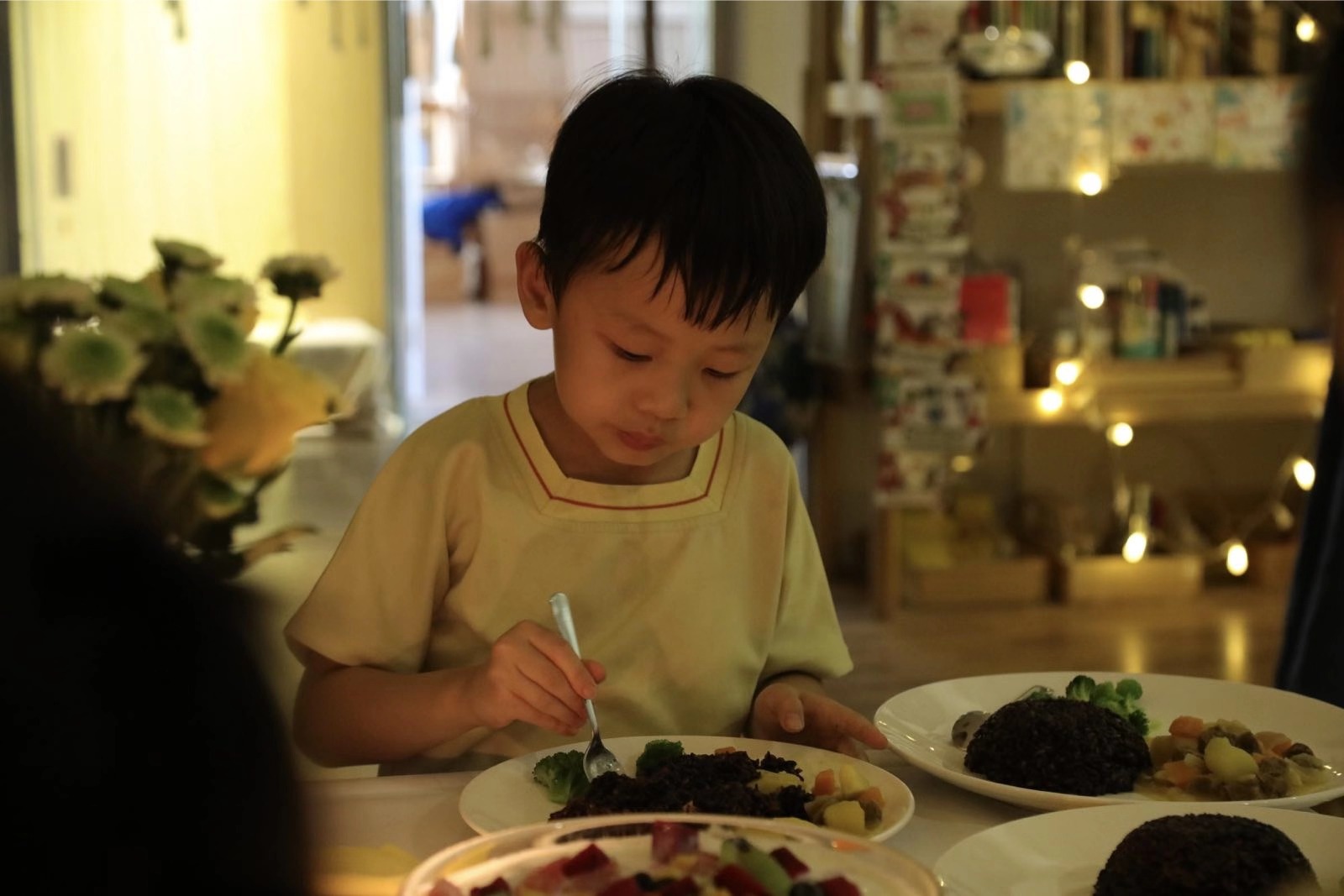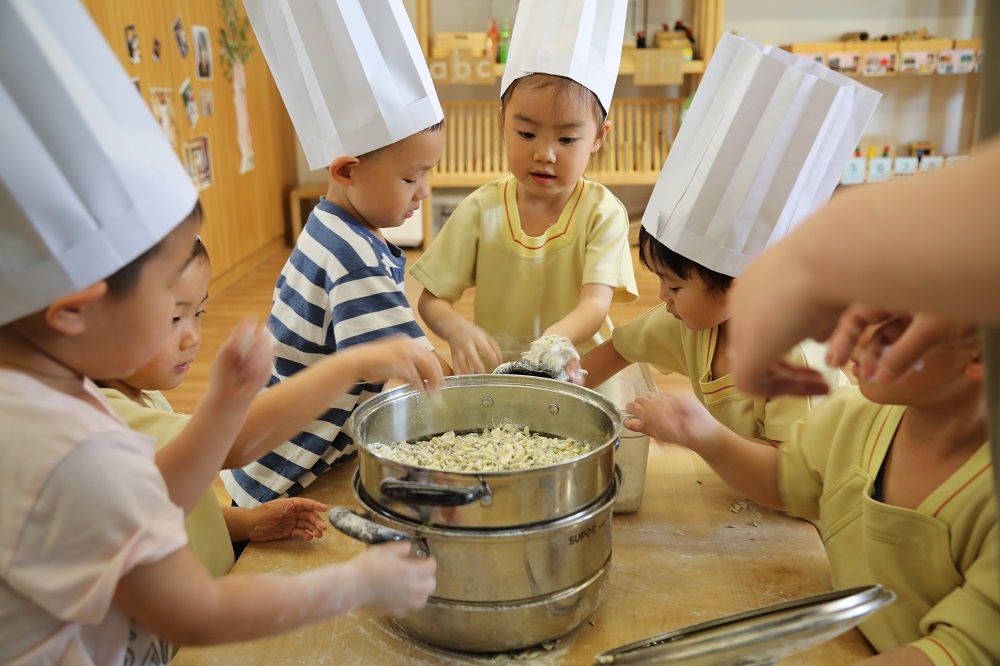
Tao is a concept first created by Lao-tzu, in the ancient classic Tao Te Ching (道德经, Dào dé jīng). It is often used symbolically as the “right way” to approach things in your everyday life. The concept of Tao is all around us, and the Tao of school food is no exception.
With such an emphasis on academics when examining the quality of a school, the food choices on offer for its students can be easily overlooked. However, the care put into crafting their menu selections can be just as important as the curriculum, since a healthy and delicious meal can help students focus better in class. Beijingkids had the opportunity to study the Tao of food at three different international schools in the city, and discover the philosophy and practice which underpin the food they serve.
We talked to the Beijing International Bilingual Academy (BIBA) which has to meet the needs of a large, K-12 student body; the French International School of Beijing (Lycée Francais International Charles de Gaulle de Pékin, LFIP), which serves more than 850 home-cooked meals every day; and the Peide School, which looks after kindergarten children with a full in-house kitchen staff preparing meals. We asked these three very different schools about their food philosophy, how they cope with the challenges of meeting their students’ needs, and how both students and parents are involved in this process.

Food philosophy
When Tao is used in the context of Chinese cuisine, the ‘right way’ not only means that it needs to taste delicious, it has to both look and smell great. Meanwhile, people in the west tend to focus more on a complete meal that satisfies all the nutritional requirements.
The Peide School food menu offers exclusively Chinese cuisine, while preferring ingredients that are in season. Aleksandar Palfi, nutritionist and dietitian at the Peide School, describes this approach as “Chinese roots and a global view:, and explains that they try to follow the 24 solar terms to get the freshest fruits and vegetables, so that they can make the food as healthy as possible. The Peide School believes that “If students develop healthy habits when they are young, they will grow up to be healthy adults.”
As the representative of “western style” cuisine, the French international School of Beijing is more dedicated towards providing daily, healthy homemade meals to their students, prepared by the French chef of Chartwells and his team. Olivier Mallard, General Manager at LFIP, told us that “99 percent of the menu is western food. The Asian menu is only offered about once or twice a month, and the emphasis is mostly on French cuisine.” With the emphasis on “preparing and cooking on site, using primarily fresh produce,” Olivier believes that “even though homemade food could be time consuming, it is important to provide students foods that are safe to eat, but also with real flavors and known ingredients.”
Meanwhile, BIBA provides a range of both western and Chinese food for their students. Mei Li, the Logistic Manager at BIBA, said many students like the variety of food on offer. They will usually offer “noodles from different regions in China”, while at the same time they also have food catering for different types of vegetarians.

Facing up to challenges
Each of these approaches brings its own challenges. At Peide School, for example, offering a nutritionally balanced diet to their children is their top priority. Previously the school only served vegetarian meals, in an effort to provide students with healthy and varied dining options that were accommodating to all dietary restrictions.
After listening to feedback from the parents as well as research of their own, the school decided to include some meat in their diet. The school then managed to find their supplier of high quality fresh meat, thanks to the parent committee’s support. Subsequently, the school gradually introduced beef and some seafood into their meals so their students can receive a nutritionally balanced lunch, while also being healthily conscious. “They love it! ” Aleksandar Palfi told us. “We use less oil than normal Chinese cuisine, I like it too!”
At the beginning of every semester, students can choose between vegetarian food or meals with meat when they start school. A new menu is introduced weekly. A typical week will consist of the “five grains” (wheat, soybeans, broomcorn, foxtail millet and hemp) and different kinds of vegetables that are in season. Examples of these include red bean cake and multigrain rice. If students choose to include meat in their diet, their meals will include fried seafood or beef with seasonal vegetables on a daily basis.
General manager Olivier Mallard mentioned that training staff to provide homemade meals to students is one of the challenges they face at LFIP. Most of their staff members are Chinese cooks who are more familiar with local cuisine rather than western-style cuisine. Mallard personally trains the cooking staff on how to prepare and serve western food.
He not only believes in face-to-face interaction when it comes to training staff, he also makes the effort to talk to students. One of his findings was that most students love chicken nuggets. Instead of telling them to stop eating this junk food, he decided to show a documentary explaining how nuggets are made. His approach of “showing, not telling” has actually gotten students to pay more attention to the nutritional value of the food they eat.
Logistics Manager Mei Li told us that “feeding all of the students and catering different types of cuisine is the biggest challenge we have.” BIBA focuses on providing a variety of meals to their students so that each student feels like they have a choice when it comes to what they eat. The school achieves this by procuring the services of a reputable food catering company. The company provides high quality food suppliers and chefs for the school to prepare and serve a wide range of western and local food for students.
A reputable company which consistently provides high quality, and safe food at a reasonable price, are the main requirements when picking a catering company. Mei added, “this usually results in us selecting the same catering company as other big international schools, with a good and trustworthy team”. This sentiment was echoed by Aleksandar Palfi. He also emphasized that “we also communicate with students, parents, and workers to get feedback and improve.”

Students’ and parents’ involvement
Peide: Twins Venice and Alex, told us they both don’t like vegetables, but they love meat and dessert.
The French International School: Paul Malochet, and Fantin Romat Gosset (Grade 6): we like meat!
Beijing International Bilingual Academy: Hannah (grade 3): I like Italian pasta, beef, sea weed, eggs, and tomatoes. But pizza is my favorite!
Liam (grade 3): I like tuna sandwich, I don’t like mushroom.
“We discuss with parents a lot to make sure everyone is happy with the food,” Aleksandar Palfi at Peide School said. “We will plan our food every two weeks. We consistently make adjustments to ensure that the food is at its freshest and also delicious for everyone.”
Before every meal, the students at Peide School sing a “Thank You Food” song: “Thank you flowers, thank you fruit, thank you leaves and trees. Thank you sun, thank you rain, thank you wind and earth. Thank you everyone, please eat.”
BIBA has not only set up a parents’ committee to evaluate the food served to their children, but the school has also a student union to join in and share their opinions as well. Parents on the committee are all volunteers; the Parent-Teacher Association (PTA) recruits two for kindergarten, two for primary, and one for middle school. Lily, the president of the Parent Committee, told us that the committee has been operating for eight years, and regularly supervises school canteen food.
“We hold monthly meetings to check the menu, and discuss recent problems to find a solution,” she said. “Recently we stopped offering pork, due to the African swine fever issue.”
The French International School allows for both parents and students to personally interact with the chef, and he even offers classes to educate students about the importance of healthy eating. Parents can also try the food that the school provides and input their own advice on the types of food served. In addition to this, the school has also set up a committee whose goal is to evaluate and improve the services of the school catering company.
Even though each school may have a different food philosophy, the core of their ideals remain the same. Their goal is to provide safe, healthy, and nutritious meals to promote the growth and well-being of their students. LFIP offers homemade meals with an emphasis on being as organic and nutritious as possible. Peide focuses on seasonal local cuisines and involves the students heavily in their meal preparation. Finally, BIBA consciously blends Western and local cuisines to give their students a taste of both home and abroad, because this effectively mirrors the makeup of their student body. Each school faces their own challenges, and they all take measures to continually improve how they prepare and serve their students’ meals. In this way they plan to be able to meet the changing needs of their students not just now but in the future too.




